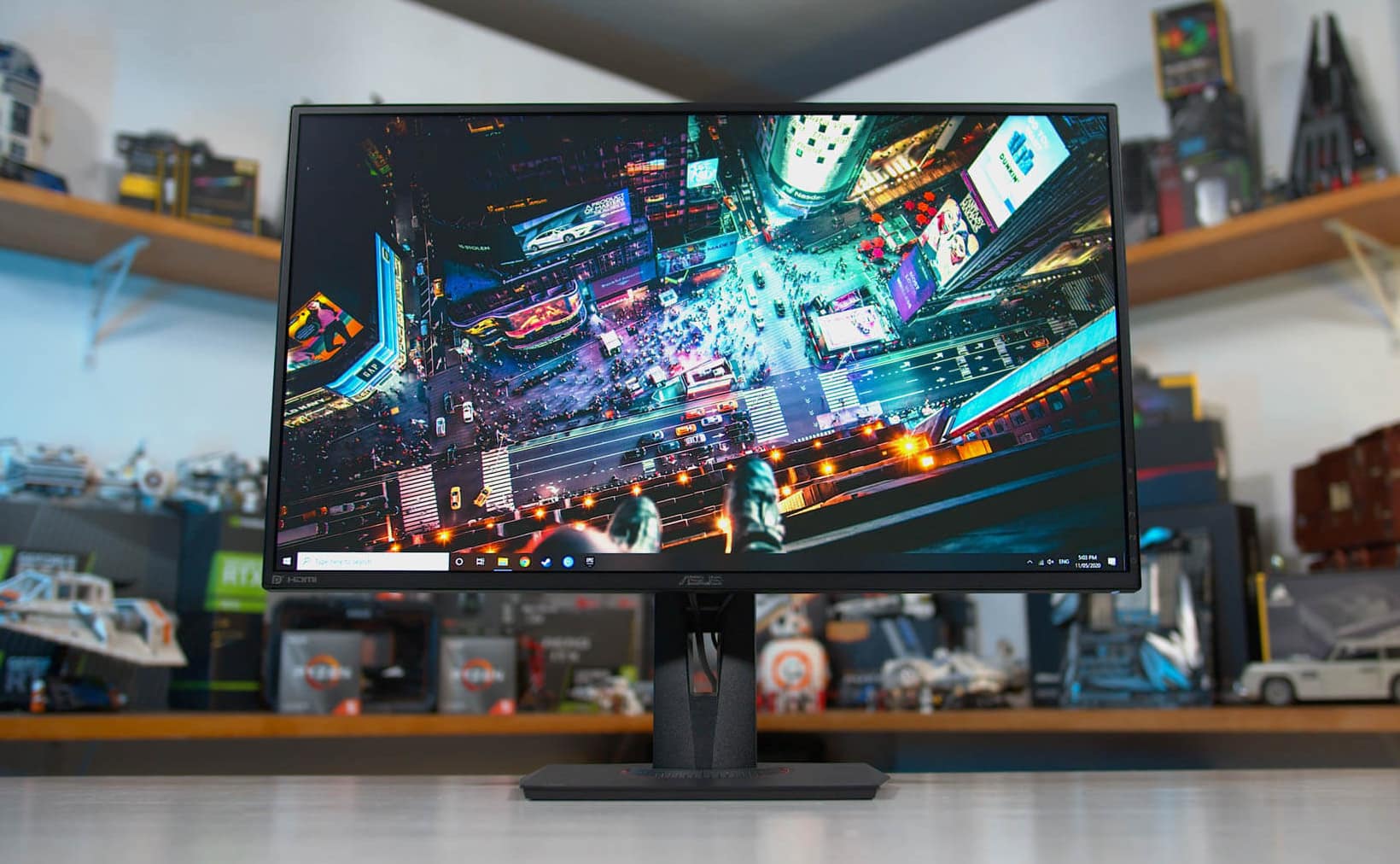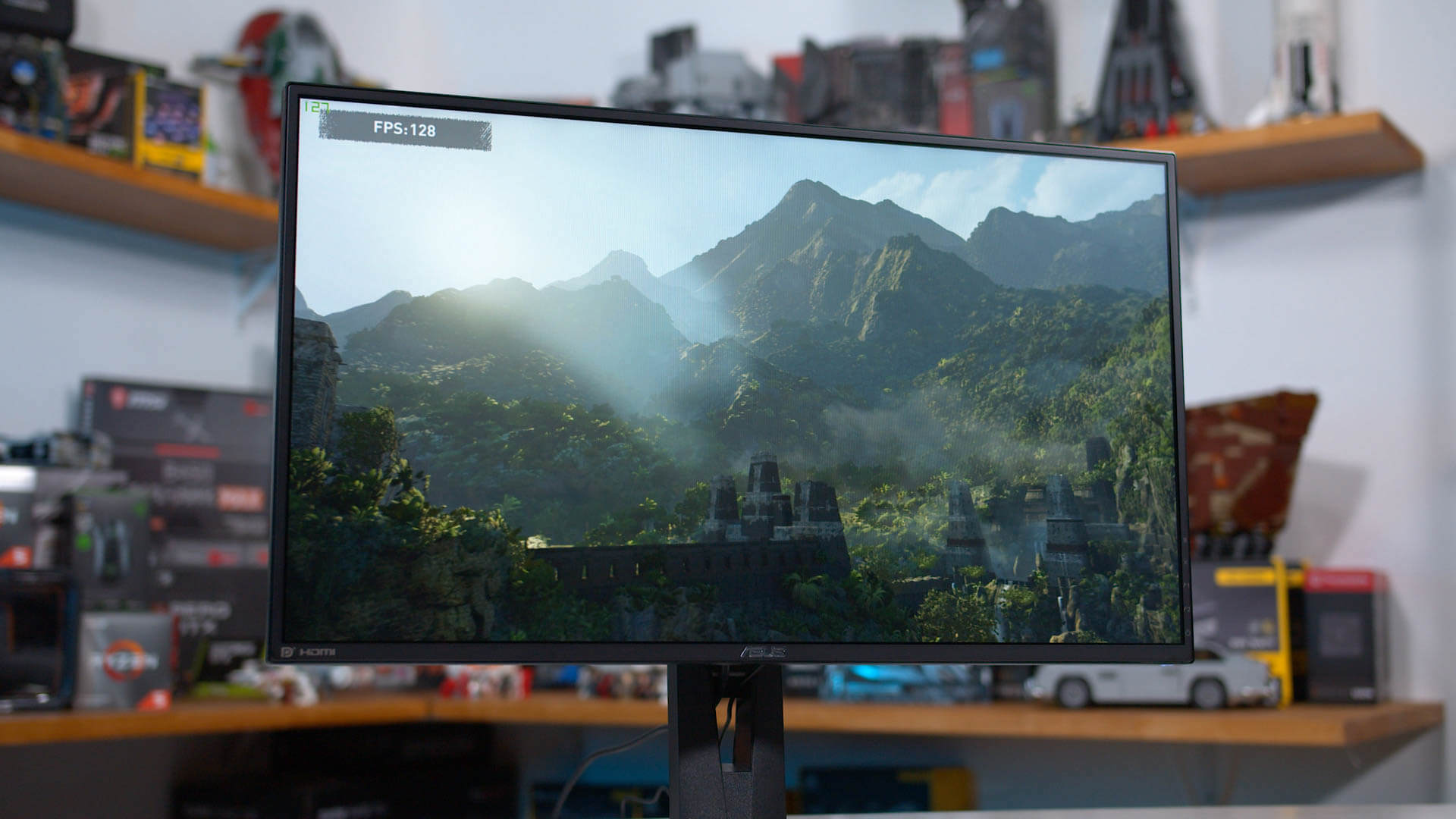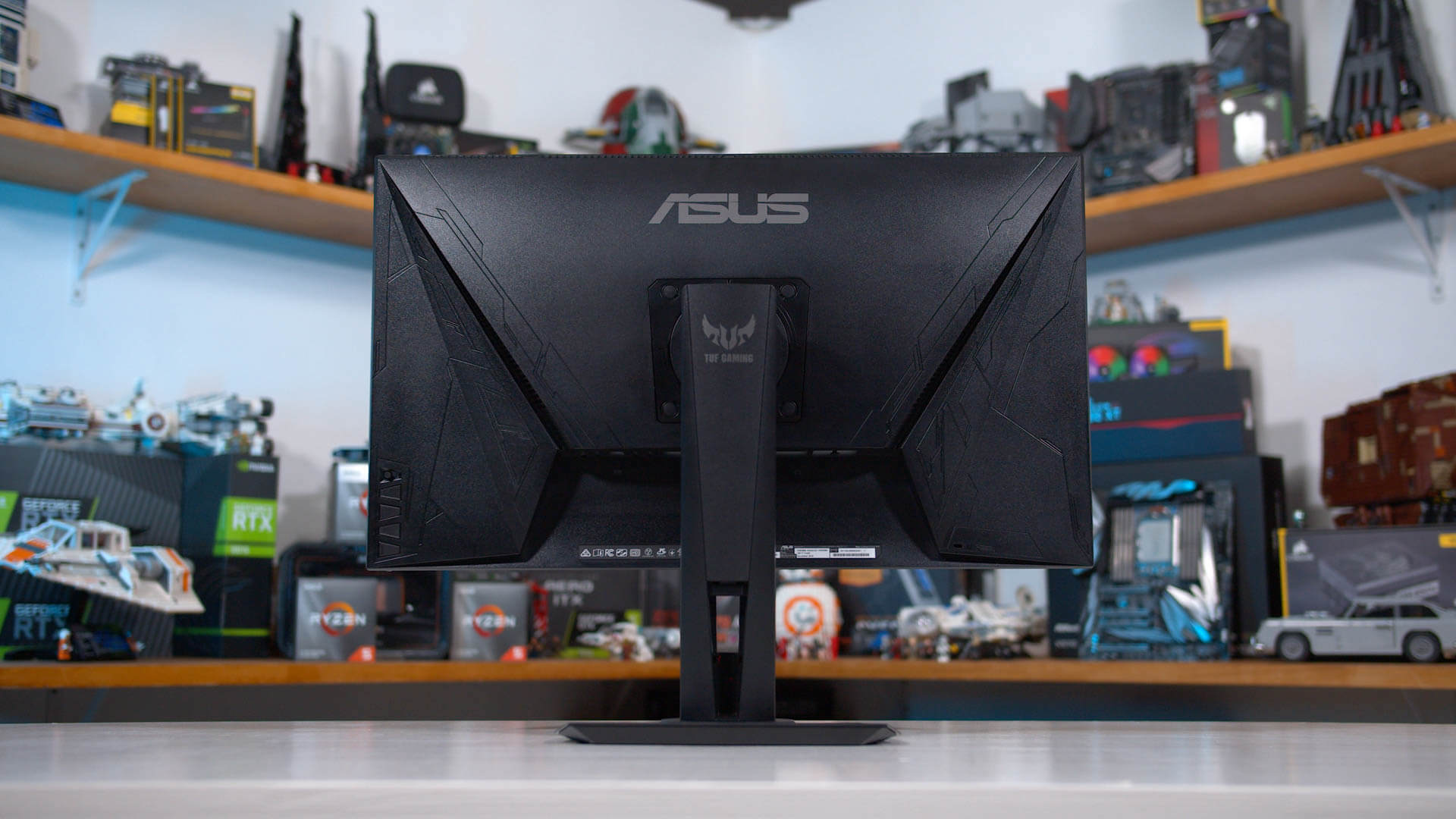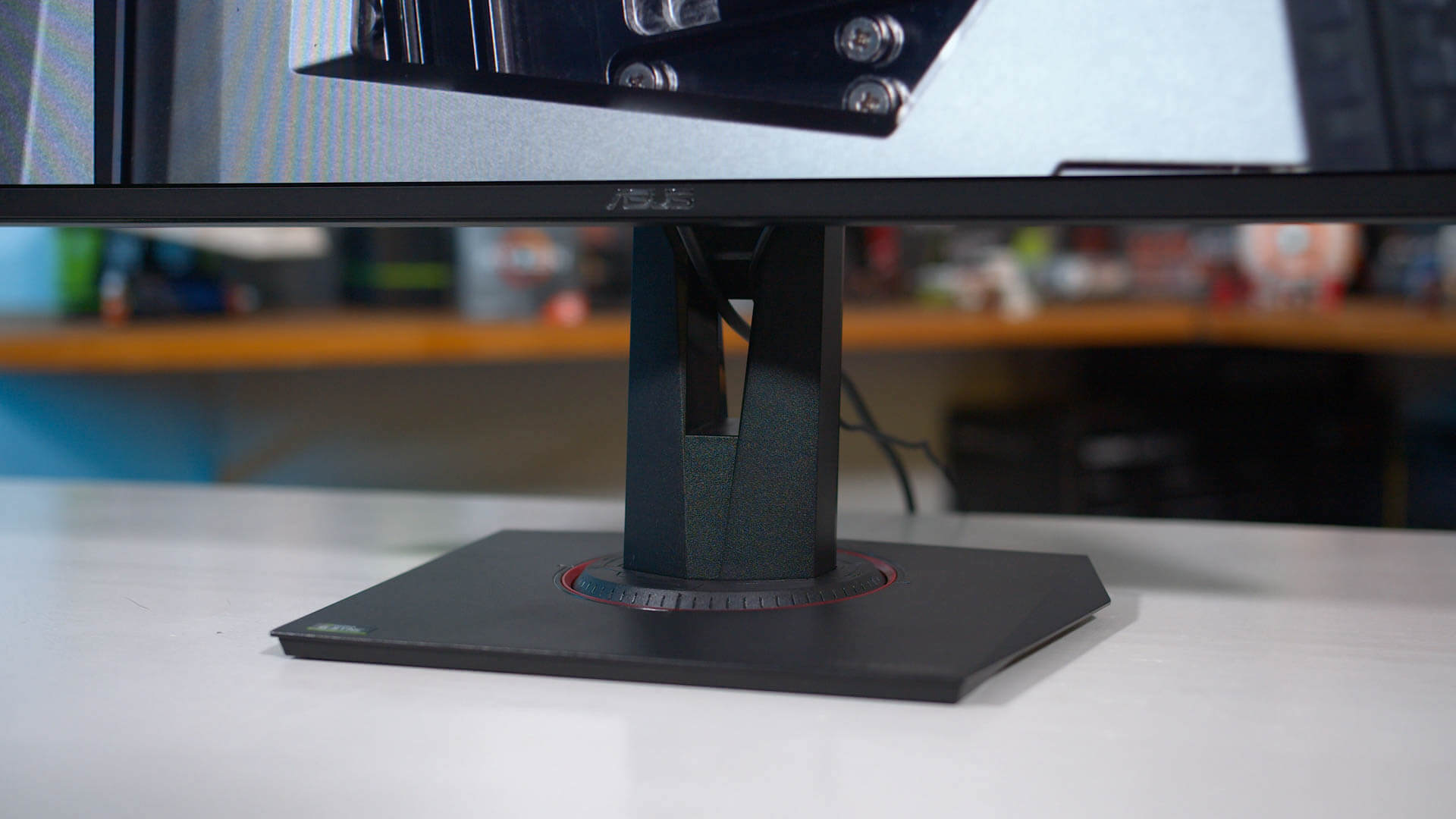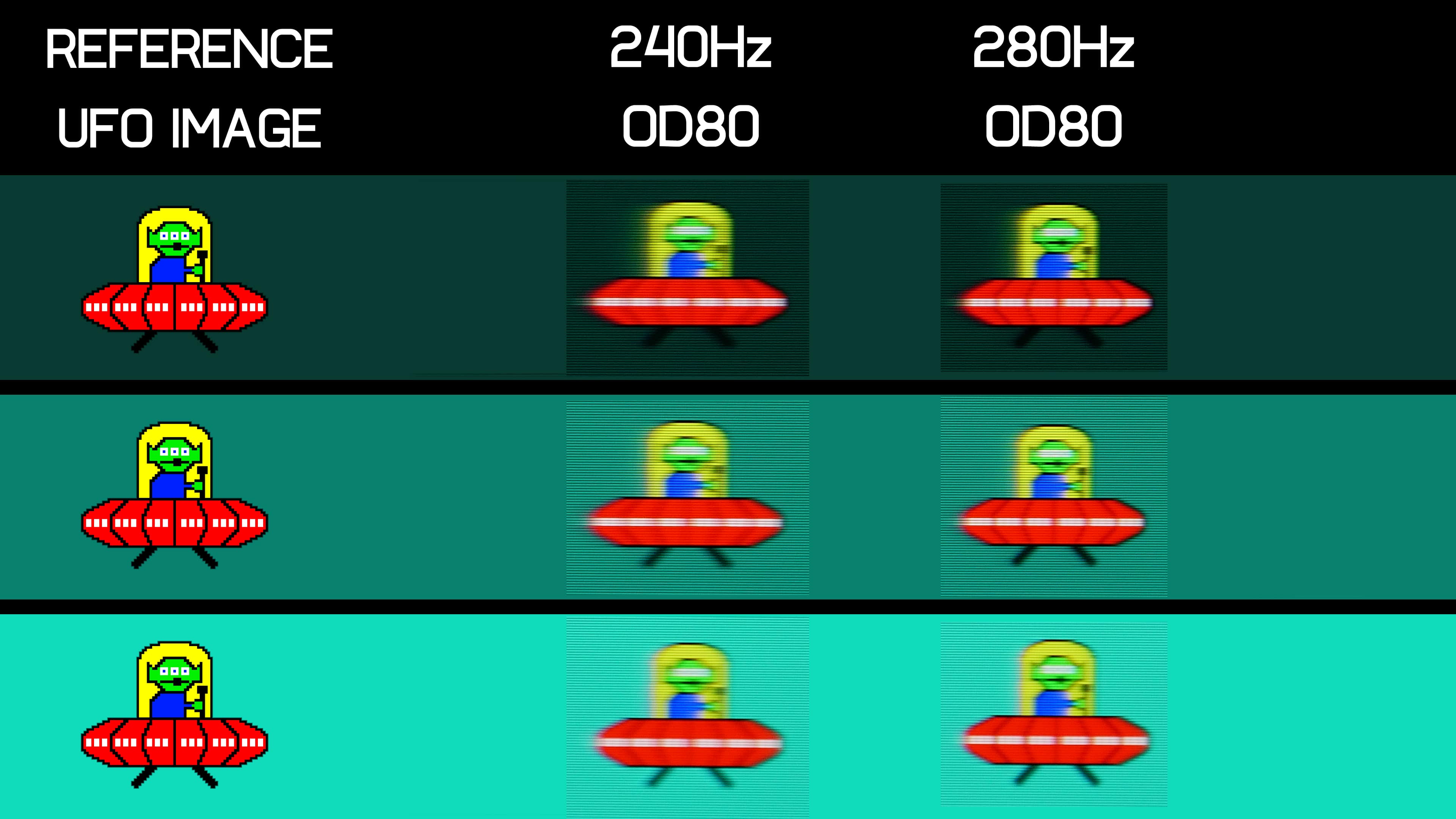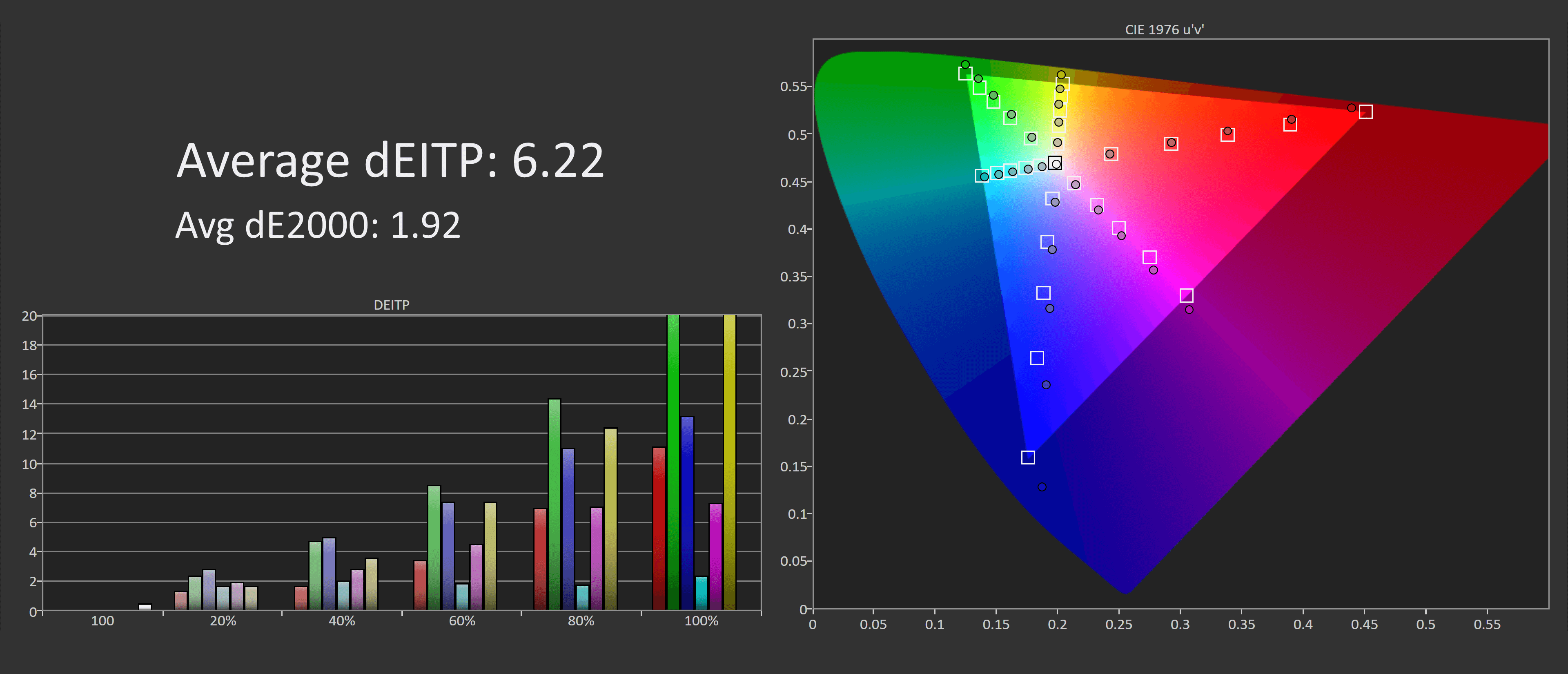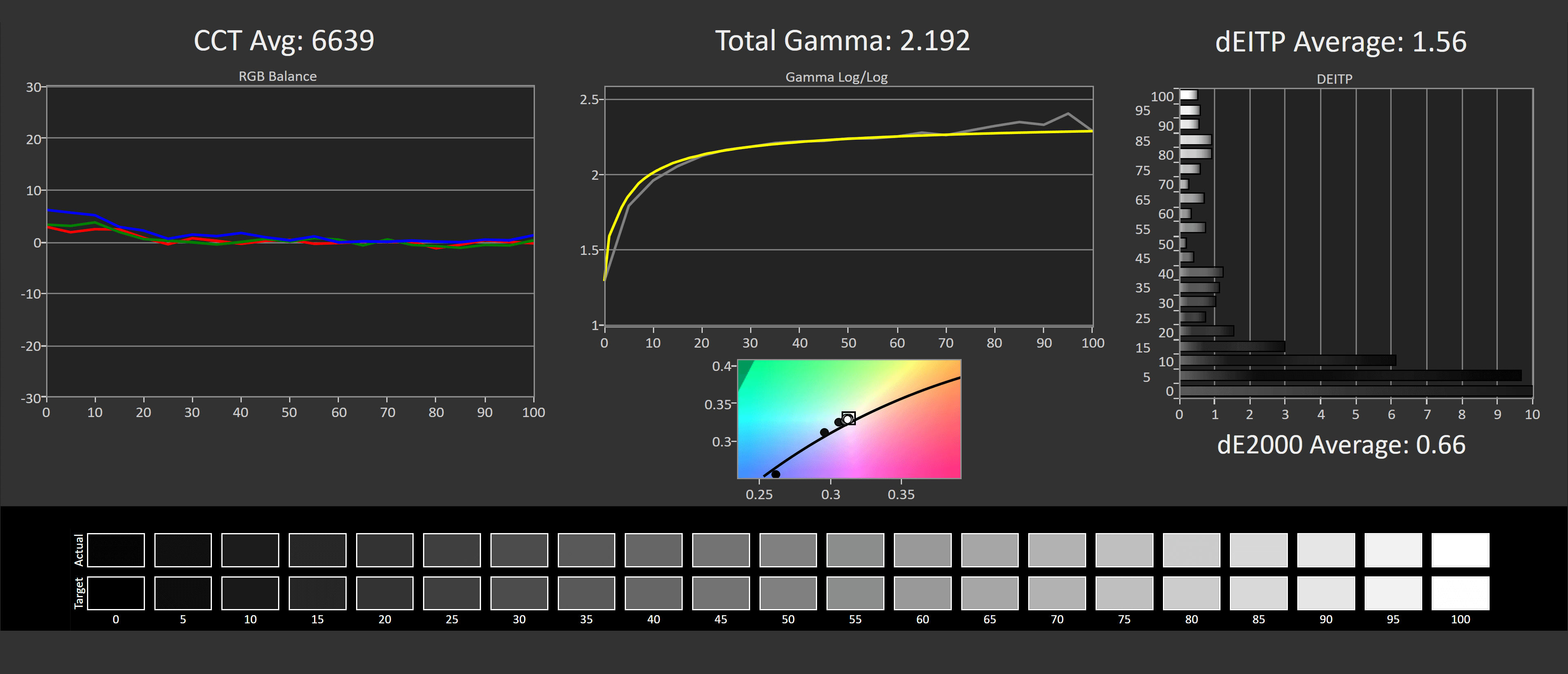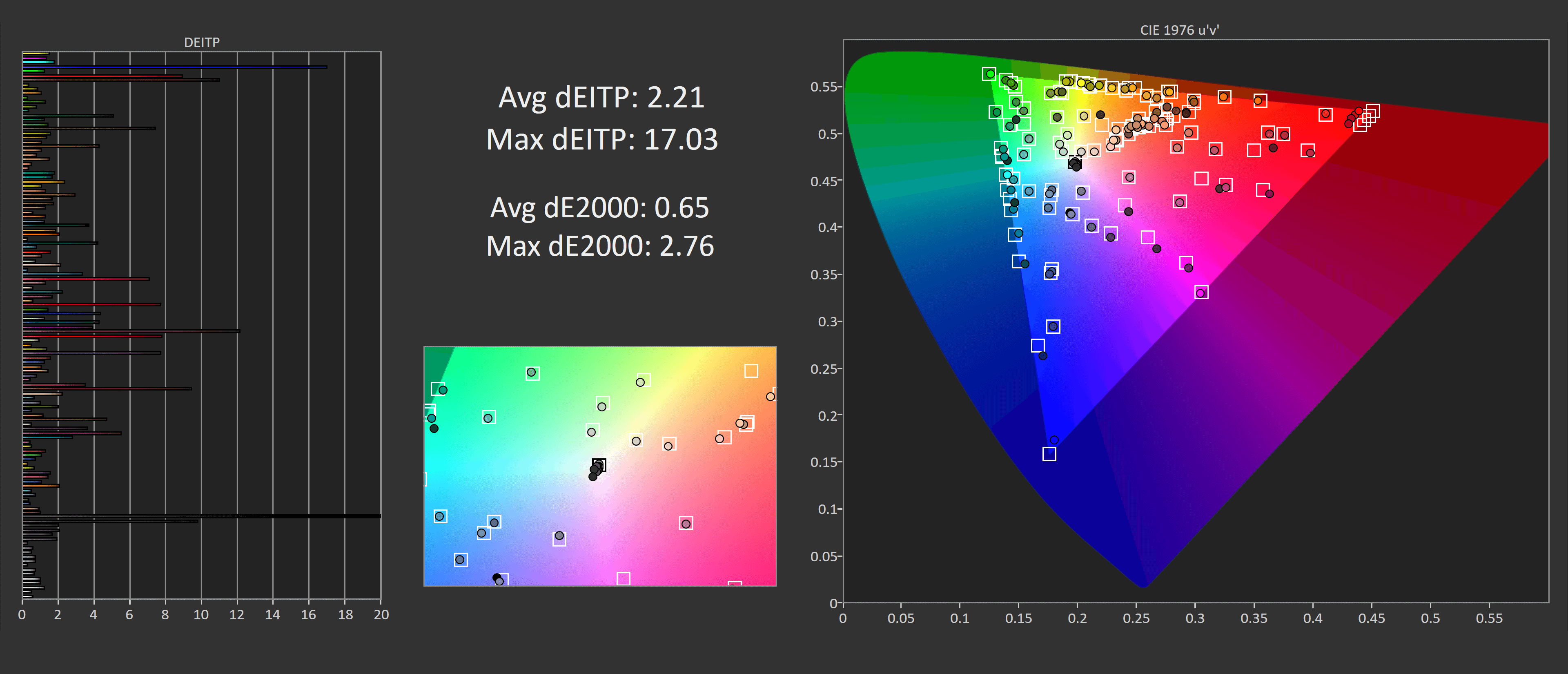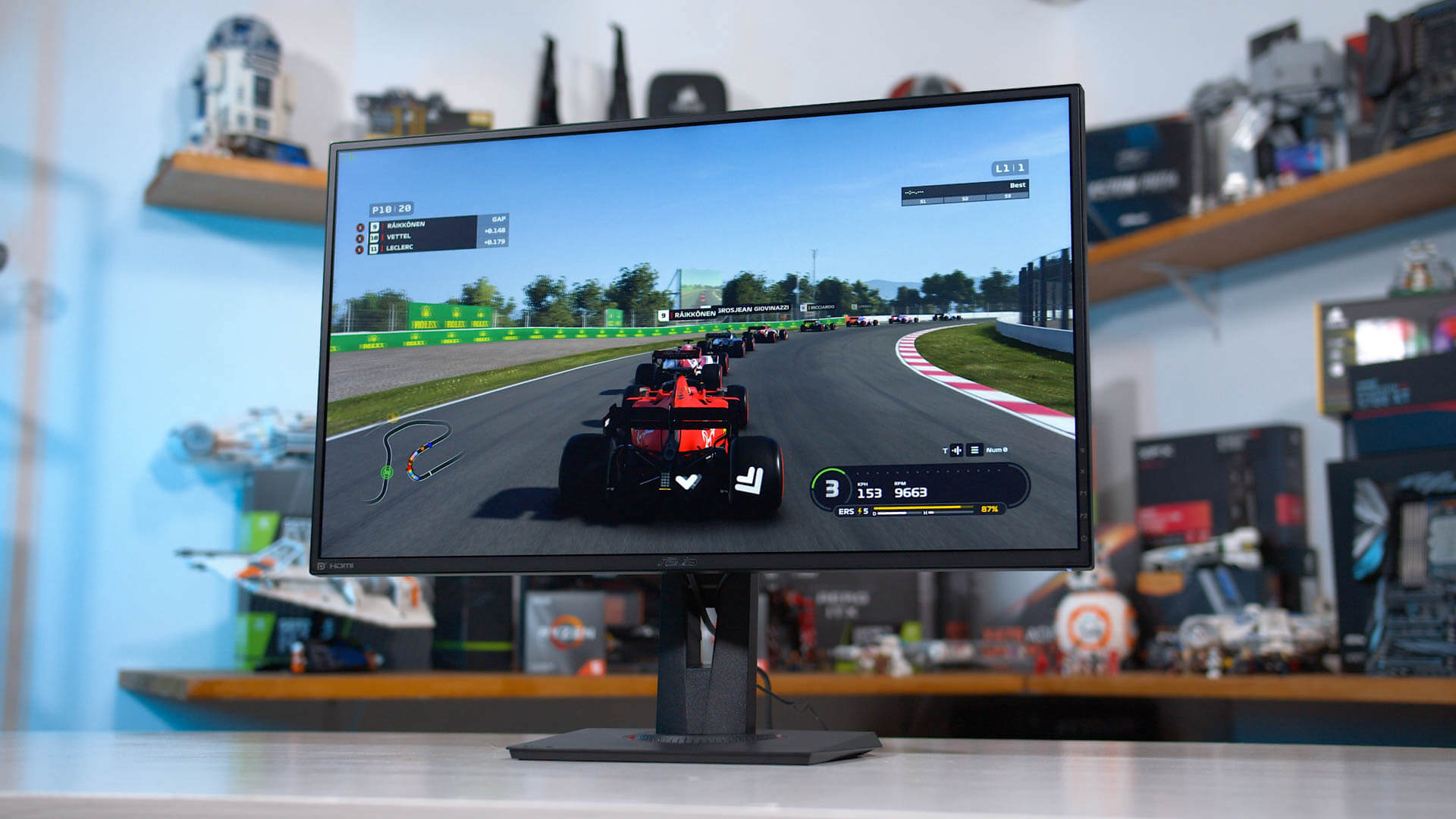We continue our look into the latest generation of high-refresh IPS gaming monitors with a review of the Asus TUF Gaming VG279QM. Although the TUF family is generally associated with value offerings, there are a few unique and high-end features Asus is providing with the VG279QM.
The first is the ability to "overclock" this monitor from 240 Hz to 280 Hz, another is ELMB-Sync, which allows you to use backlight strobing and adaptive sync at the same time. Those two combined with Asus' promise of 1ms grey to grey response time, we're set for very high levels of performance.
Having already been impressed with how other new 1080p 240Hz IPS displays have performed – namely the MSI MAG251RX and the LG 27GN750 – it'll be interesting to see how this Asus alternative fares.
Asus claims this is the "world's fastest gaming monitor", which probably is correct if they are strictly referring to the refresh rate. On the other hand, they've also touted support for HDR technology through DisplayHDR 400 certification, however this isn't an HDR monitor in any sense of the word as it lacks most of the necessary hardware features.
The TUF Gaming VG279QM has a list price of $400, putting it in competition with the LG 27GN750 and making it a tad more expensive than the MSI MAG251RX, though that's a smaller display.
Speaking of size, we've mentioned before that we find 27-inches a little too large for a monitor that only packs a 1920 x 1080 resolution. We feel the sweet spot or even maximum size for that resolution is 24-25 inches. The pixel density isn't great, however Asus also offer a 24.5-inch alternative in the VG259QM – all the same features including a 280Hz refresh rate and the same class of panel from AU Optronics. This doesn't mean the 27 and 24 inch monitors will perform the same, but it's worth pointing out there are two models in this line-up if you're interested.
The physical design of the monitor is similar to their other TUF Gaming displays, and it's one that we quite like. It's not as aggressive or over the top as ROG products, it's a bit easier on the eyes, but still with enough gamer elements that you won't mistake this for an office monitor. However unlike ROG, the outer facing materials for this display are almost all plastic, it doesn't look bad but metal often gives a more premium touch.
There's decent stand adjustability, including the full complement of height, tilt, swivel and pivot support. We'd have liked a bit more height available, but it still ends up quite decent and has VESA mounting support should you need it. It's a sturdy feeling display stand, too, despite all the moving parts.
Asus offers a directional toggle for controlling the on screen display on the right side of the monitor, plus a few quick access buttons. Asus' software stack built into their screens is top notch and includes a wide array of gaming features, including crosshairs, timers, refresh rate displays, shadow boosting modes, and even a "sniper" mode. It's easy to navigate, too, Asus clearly knows what they're doing.
For inputs you get two HDMI 2.0 ports and DisplayPort 1.2. The HDMI ports are limited to 240Hz, so if you're interested in overclocking the monitor and running it at 280Hz, you'll need to be using DisplayPort. There are built in speakers, but they're barely serviceable.
Performance
Let's get into the all-important response time testing, and in typical Asus fashion they are offering six overdrive modes labelled 0 through 100. Let's go through the basics and then focus on a few of these options because half of them really aren't worth talking about.
Response Times / Overdrive Modes
The 0 overdrive mode is overdrive disabled, not much going on here, response time average of 5.64ms is pretty good for native panel performance. 20 is also quite mild on the overdrive front. The 40 mode is where things heat up a little bit, we're now reaching a sub-5ms grey to grey average at 280Hz, although this isn't quite fast enough to get a true 280Hz experience. There is an incredibly tight 3.57ms refresh window requirement here, so only 50% of transitions get close to this in this mode.
Asus TUF VG279QM - Overdrive Off (280 Hz)

Asus TUF VG279QM - Overdrive 20 (280 Hz)

Asus TUF VG279QM - Overdrive 40 (280 Hz)

Asus TUF VG279QM - Overdrive 60 (280 Hz)

Asus TUF VG279QM - Overdrive 80 (280 Hz)

Asus TUF VG279QM - Overdrive 100 (280 Hz)

Stepping up to overdrive 60 presents an interesting situation that I've never seen before with a monitor. This mode, despite being a higher listed overdrive mode, is actually slower on average than overdrive 40. Asus appears to change the way they implement overdrive for levels 40 and below compared to 60 and above, which creates a different experience. The difference isn't massive, but slower is slower.
Overdrive 80 is where you want to be sitting for gaming at the maximum refresh rate. Response times fall to 3.82ms on average, and there's no appreciable overshoot. We are only getting around 75% refresh rate compliance, so this is a borderline 280Hz experience, but in practice it is a slight step up from 240Hz. Then at overdrive 100 we see a typical situation where to achieve a 1ms grey to grey response time in their marketing material, they've blown out overshoot levels to the point where the mode is unusable.
Thus, overdrive 80 is the best for gaming at the maximum refresh rate, but it isn't as suitable for lower refresh rates. In my testing I found the mode to be fine up until 200 Hz or so, but when dropping down to 144Hz and below, we start to get significant levels of overshoot. While response times are consistently between 3 and 4ms, at any refresh rate below 144Hz you'll easily spot inverse ghosting.
Asus TUF VG279QM - Overdrive 40 (144 Hz)

Asus TUF VG279QM - Overdrive 40 (60 Hz)

For gaming across the adaptive sync range, we're then left with two options: OD 40 and OD 60. As mentioned a moment ago, OD 60 is actually slower on average, and this holds throughout the entire refresh range. While 60 delivers around a 5.2ms grey to grey average at most refresh rates, OD 40 is more around 4.6ms, so roughly 10-15% faster. And from the response time charts you can see how the overdrive implementation seems to change between the two options.
OD 40 also fairs a little better at lower refresh rates than OD 60. At 85Hz for example, OD 60 produces an average error of 5% with 15% of transitions producing noticeable inverse ghosting. With OD 40, the error average is slightly lower and we have just 8% of transitions with inverse ghosting. This is, again, despite OD 40 being faster overall.
Asus TUF VG279QM - Overdrive 80 (200 Hz)

This leaves the VG279QM with two overdrive mode choices depending on how you are using the monitor. At high refresh rates, you'll want to use OD 80 for the best clarity above 200 Hz. For lower refresh rates, at 144Hz or below, OD 40 is the way to go, however this mode isn't fast enough to deliver a "true" 280Hz experience at the top end. Ultimately there's no single overdrive mode that's the best for the entire refresh range, I'd probably stick to 40 if you're only occasionally going above 200 Hz but for esports titles like Fortnite and Overwatch on a high performance PC, 80 is what you should use.

Let's compare the VG279QM to some other high refresh monitor options. This chart shows the maximum performance you can get out of a monitor, and what's interesting is that despite the 27GN750 and VG279QM using different panels, both perform very similarly in terms of response times, both around that 3.8ms mark. The Asus variant is a bit faster of course, being able to hit a 280Hz refresh rate instead of 240Hz.
The MSI MAG251RX uses the smaller 24.5-inch AU Optronics panel and is a little more aggressive on the overdrive, allowing it to perform slightly better. The inherent differences between each of these three models is pretty small though, and performance is largely dictated by how well tuned the overdrive controls are.
Then we have TN options which in general are a step above in terms of response time performance. These "0.5ms" class panels can typically offer 3ms response times throughout the entire refresh rate range without many overdrive concerns, and would be the go to choice for those that care more about performance than any color qualities.

With refresh rate compliance, the VG279QM does suffer a little bit in striving for a 280Hz refresh rate, which is why it sits a bit lower than other 240Hz IPS monitors in this chart. While 280Hz is a borderline experience, 240Hz is easily achievable with over 90% refresh rate compliance. In fact speaking of this difference, is 280Hz even worth it?
Well for starters, a 280Hz panel is only 17% faster in terms of maximum refresh rate than a 240Hz panel, which at these sorts of refresh rates is hard to distinguish between. Here's some pursuit camera tests with Blur Busters' UFO image and on the VG279QM, the 280Hz image is slightly clearer but honestly the difference is pretty small and I don't think 280Hz is worth much of a price premium over 240Hz.

We found no issues with input lag operating at 280Hz. This is a very responsive monitor with next to no input lag concerns. We did find the monitor was a bit slower in terms of input lag at 60Hz and refresh rates below 100Hz, at least with fixed refreshes, not sure what's the cause but the 27GN750 didn't have that problem.

The other major selling point to the VG279QM is ELMB-Sync, which attempts to deliver backlight strobing with adaptive sync simultaneously. Having backlight strobing only at fixed refresh rates is a major limitation of the technology in my eyes, so I appreciate Asus trying to innovate to fix this significant downside of using strobing.
While the implementation is decent compared to similar IPS monitors, if there are issues with strobe crosstalk or double images, I don't think the mode is worth using. The VG279QM does produce minor image repetition while using ELMB-Sync at a variety of refresh rates, and this can be distracting while gaming compared to just the regular non-strobed mode. However, these artifacts are less noticeable than on a monitor like the MAG251RX, so it's far from the worst offender.
Personally I wouldn't use this mode given it's intended to produce a crystal clear image while gaming and it kind of doesn't do that, but other people might be less sensitive to these artefacts and it might depend on the game you're playing. The implementation needed a bit more work to achieve what it set out to achieve.
Color Performance
Moving into color performance now and there's nothing particularly unique about this IPS offering, given it's just a standard sRGB display. This is identical to the other high-refresh 240Hz options I've tested, which also only offer an sRGB gamut. However in the case of our review unit, Asus has done a great job of calibrating this monitor out of the box for greyscale performance.
Default Color Performance
The CCT curve is reasonably flat and the monitor follows the sRGB gamma curve to a good degree. This leads to an impressive dEITP average of 2.94, or just 1.29 using the old dE2000 metric. This is an excellent result for a gaming display out of the box, with no appreciable color tint.
Saturation performance isn't quite as good, but it's not due to an unclamped gamut. Instead, there is a small amount of drift at higher saturation levels, seen in some of the blue and green results specifically. Nothing overly bad, but a saturation deITP average of 6.22 could be improved. However this isn't something that OSD controls can tackle. Similar story for ColorChecker, the overall deITP average is decent but nothing mind blowing.
Calibrated Color Performance
I wasn't able to improve performance through OSD tweaks so the next step is a full color calibration, which will hopefully address some of the small color drift we saw. And it does that quite nicely, while also improving greyscale accuracy to a dEITP average below 2.0. Saturation is also below 2.0 now, only limited by the panel not quite being able to hit 99% sRGB coverage. Then for ColorChecker we see standard results from a calibrated IPS panel, which is to say performance is very strong.

The VG279QM is capable of great brightness levels, around the 400 nit mark after calibration, which is in keeping with its DisplayHDR 400 certification. This should be suitable for most use cases. Then for contrast ratios, pretty standard stuff from an AU Optronics IPS, at around the 1000:1 mark. This is better than the 27GN750 which uses an LG Nano IPS panel, the ones known to have weaker contrast, but not as good as the MAG251RX.

I was actually expecting the VG279QM to perform more in line with the MSI monitor, and I have seen some reviews showing contrast around 10% higher than what I was able to achieve. So it seems my unit is on the lower side for what this panel can achieve, but I'm still satisfied with around that 1000:1 mark. If you want higher contrast, you'll have to sacrifice speed and go for a VA panel instead.
Viewing angles are excellent, no complaints there, and uniformity was very good with my monitor as well. Not quite as solid for dark greys, but for full white almost the entire display is the same with only slight fall off along the left edge with my unit. When you buy an IPS you expect great uniformity and that's what you get. As for IPS glow, nothing unusual with my unit to report.
As mentioned in the overview intro, the VG279QM comes DisplayHDR 400 certified, but realistically this monitor cannot provide an HDR experience. Without local dimming, the single-frame contrast ratio cannot get even close to high enough for the requirements of HDR, while brightness isn't good enough and there's no wide gamut support. This monitor fails all three requirements of HDR.
280Hz or Not?
Overall, this is another solid showing for high refresh rate IPS monitors. We've now tested three 1080p displays that hit or exceed 240Hz and all deliver great performance at that refresh rate. While TN panels continue to hold the performance crown, IPS is genuine competition and propective buyers have a great alternative that doesn't sacrifice color quality.
The TUF Gaming VG279QM performs almost identically to the other 1080p 240Hz IPS displays we've tested, so there's no clear winner from a response time perspective. No model we've reviewed is perfect – you'll need to change overdrive modes depending on whether you're gaming at super high or moderate refresh rates – but in general we were impressed with the overall performance. These panels handle 240Hz really well, and in the case of the Asus TUF, borderline capable of 280Hz.
While the upgrade from 240Hz to 280Hz is small in most instances, given performance is otherwise the same between say, the VG279QM and LG's 27GN750, suddenly that slight bump to refresh rate becomes a selling point. Normally we'd just say the difference is negligible and not to bother factoring it into your buying decision, but in this instance we do feel the 280Hz refresh rate gives Asus an edge in performance.
What is less of a selling point is ELMB-Sync, which due to double image issues only has limited usability, although it is better than other implementations we've seen on IPS monitors. LG doesn't include this feature at all on their display, so Asus does provide something extra if you want to use it.
Everything else about this monitor is pretty good. Fantastic factory greyscale calibration, great brightness, better contrast than the 27GN750, a neat, functional design and plenty of OSD features. Advertising HDR when it's not HDR capable is a bummer, but not a huge deal.
Based on what we've seen so far, this is the best high refresh IPS monitor on the market. With a competitive $400 price point, it's not more expensive than similar options, so it's the display we'd recommend.
If you're a tad concerned about pixel density, should the 24.5-inch variant deliver similar performance, that could be an even better choice when it hits the market. Asus has done a great job with this monitor and they continue to offer awesome value in their TUF monitor range.

